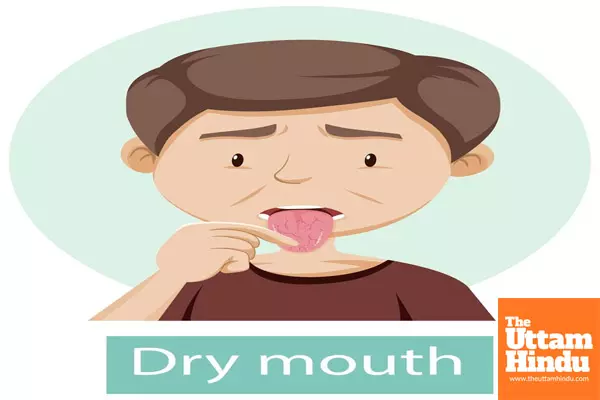
HFMD Disease Spreading Among Children: First Fever, Sore Throat, Then Mouth Ulcers

New Delhi (The Uttam Hindu): Hand, Foot, and Mouth Disease (HFMD) is rapidly spreading among children, causing significant concern for parents and caregivers. This viral illness typically begins with a fever and a sore throat, followed by the development of painful mouth ulcers. These ulcers can make it extremely difficult for children to eat, leading to a loss of appetite and dehydration.
The disease is caused by viruses from the enterovirus family, and it primarily affects children under the age of 5, although older children and even adults can also be infected. The mouth ulcers often appear in the cheeks, gums, and tongue, making eating and drinking very uncomfortable. Along with the mouth sores, rashes may develop on the hands, feet, and sometimes the buttocks.
HFMD is highly contagious, spreading through direct contact with saliva, mucus, or fluid from the blisters of an infected person. This makes daycare centers and schools a common setting for outbreaks.
Parents need to be vigilant about these symptoms and seek medical advice if their child shows signs of HFMD. It’s essential to keep children hydrated and encourage them to eat soft foods to minimize discomfort. Most children recover in about a week, but it's important to monitor for complications like dehydration.
The tale of HFMD serves as a reminder of how quickly viruses can spread among children and the impact they have on everyday life. Though the disease typically resolves on its own, preventing its spread and ensuring the well-being of children during the recovery process is crucial.**HFMD Disease Spreading Among Children: First Fever, Sore Throat, Then Mouth Ulcers**
Hand, Foot, and Mouth Disease (HFMD) is rapidly spreading among children, causing significant concern for parents and caregivers. This viral illness typically begins with a fever and a sore throat, followed by the development of painful mouth ulcers. These ulcers can make it extremely difficult for children to eat, leading to a loss of appetite and dehydration.
The disease is caused by viruses from the enterovirus family, and it primarily affects children under the age of 5, although older children and even adults can also be infected. The mouth ulcers often appear in the cheeks, gums, and tongue, making eating and drinking very uncomfortable. Along with the mouth sores, rashes may develop on the hands, feet, and sometimes the buttocks.
HFMD is highly contagious, spreading through direct contact with saliva, mucus, or fluid from the blisters of an infected person. This makes daycare centers and schools a common setting for outbreaks.
Parents need to be vigilant about these symptoms and seek medical advice if their child shows signs of HFMD. It’s essential to keep children hydrated and encourage them to eat soft foods to minimize discomfort. Most children recover in about a week, but it's important to monitor for complications like dehydration.
The tale of HFMD serves as a reminder of how quickly viruses can spread among children and the impact they have on everyday life. Though the disease typically resolves on its own, preventing its spread and ensuring the well-being of children during the recovery process is crucial.

